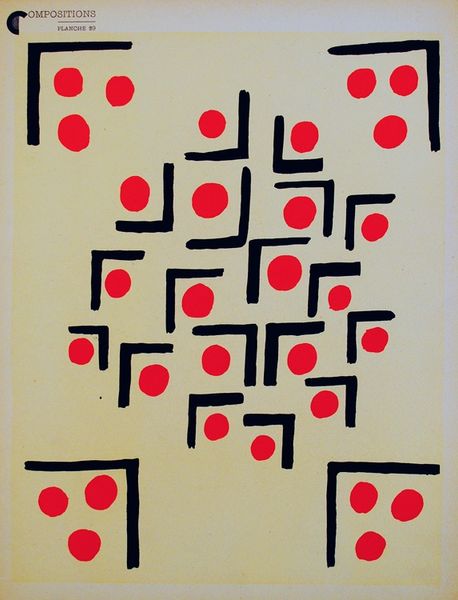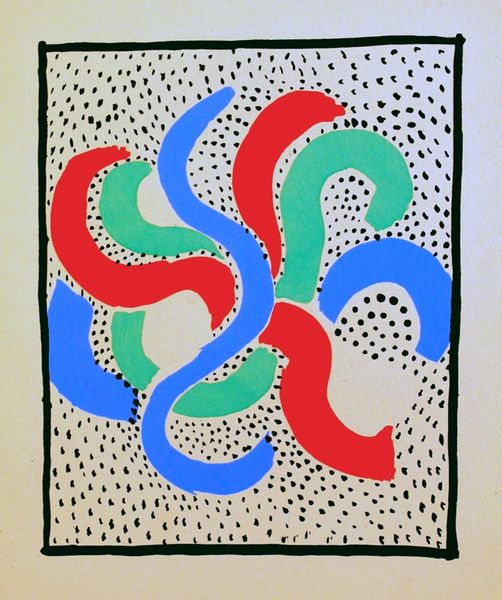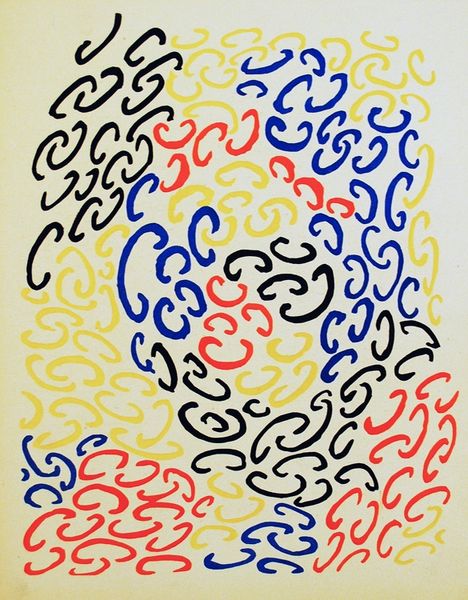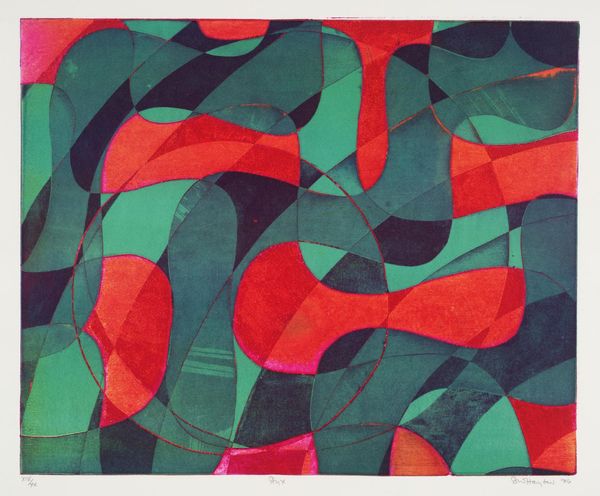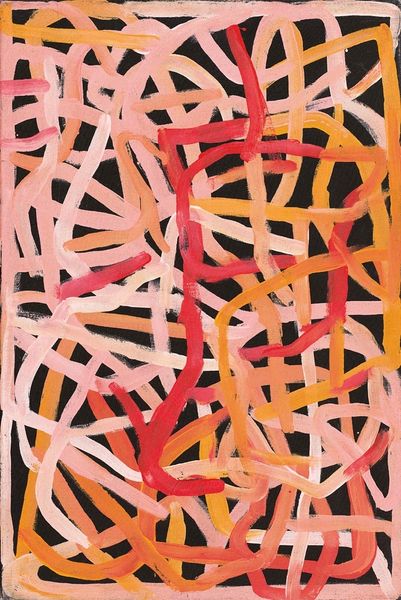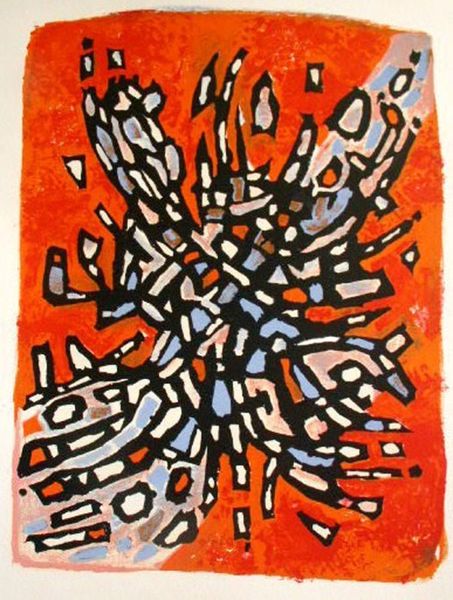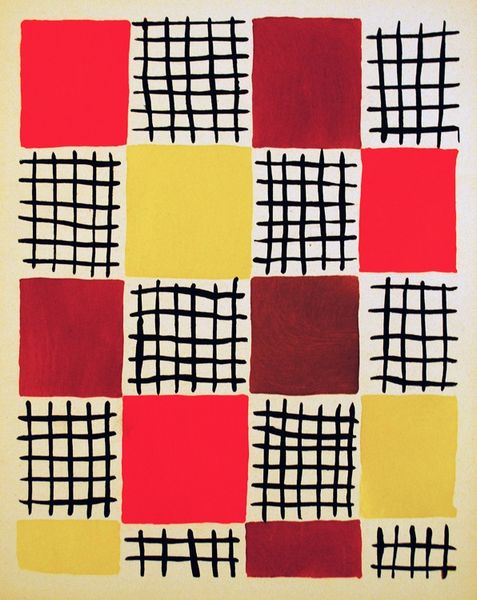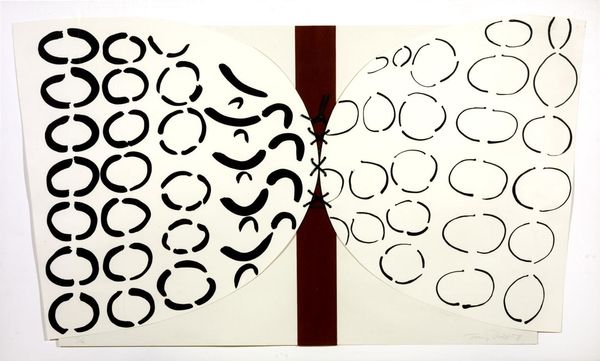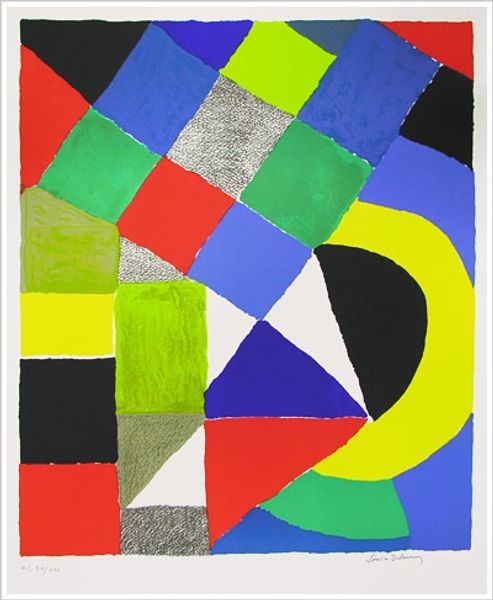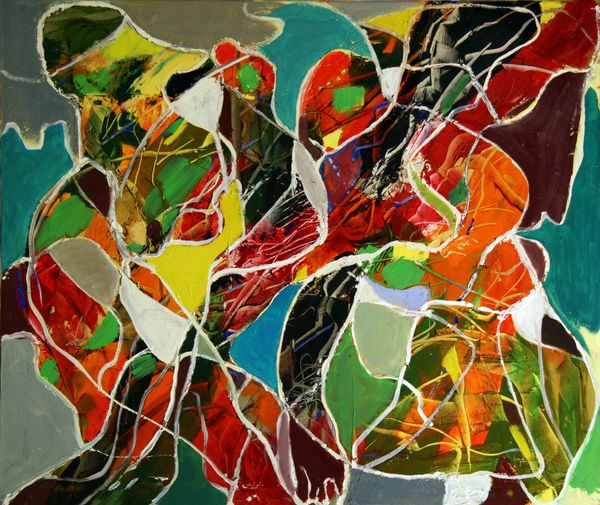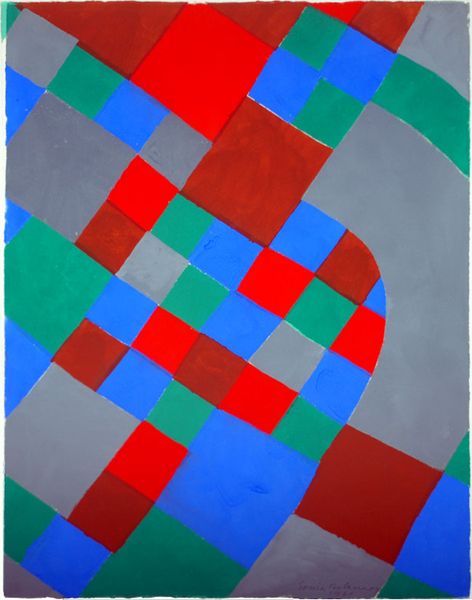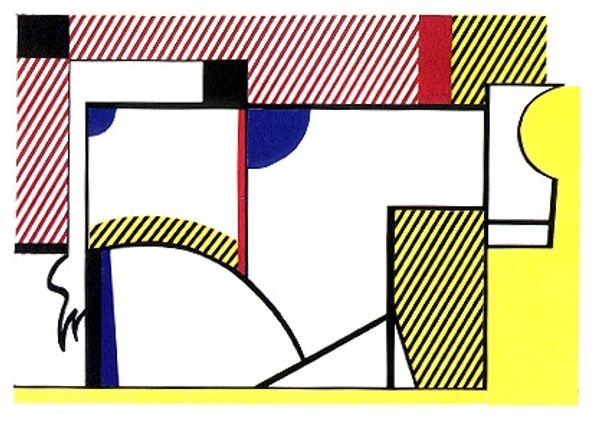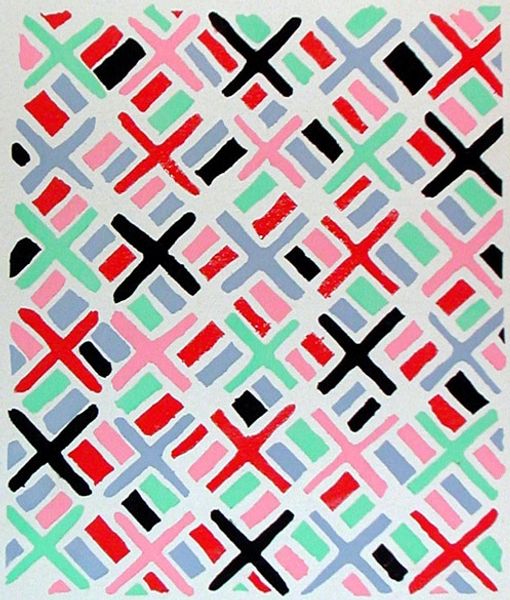
Copyright: Sonia Delaunay,Fair Use
Editor: Here we have Sonia Delaunay's "Composition 31," created in 1930 using mixed media, including print and acrylic paint. The red, green, and black squares, alongside curvilinear forms, give it an almost playful yet structured feel. How do you interpret this work? Curator: "Composition 31" pulses with the energy of its time. Delaunay, deeply engaged with the socio-political shifts of the early 20th century, was striving to forge a visual language that reflected the dynamism of modernity. Consider the role of women artists in this period. How does her abstract visual vocabulary challenge patriarchal norms within the art world? Editor: I hadn’t considered the gendered aspect. I was so focused on the colours and geometric shapes. Curator: The bold use of colour and geometric forms, rooted in Orphism, wasn't just about aesthetics. It was a conscious effort to break free from representational constraints – to create art that could communicate beyond language, reflecting a rapidly changing world. Delaunay's use of abstraction becomes a tool for exploring new modes of expression beyond the traditional male gaze. Can we view this abstraction as its own form of revolutionary activism? Editor: I see what you mean. By pushing abstraction forward, she challenges existing power structures. I’m starting to see it in a completely new light now! Curator: Absolutely. And by examining "Composition 31" through an intersectional lens, we start to understand its multilayered engagement with identity, gender, and the broader socio-political landscape of its time. Editor: Thanks, I definitely have a much deeper appreciation for Delaunay's work now. Curator: Indeed, bringing awareness to how our perceptions are shaped by socio-cultural forces makes the experience all the richer.
Comments
No comments
Be the first to comment and join the conversation on the ultimate creative platform.
